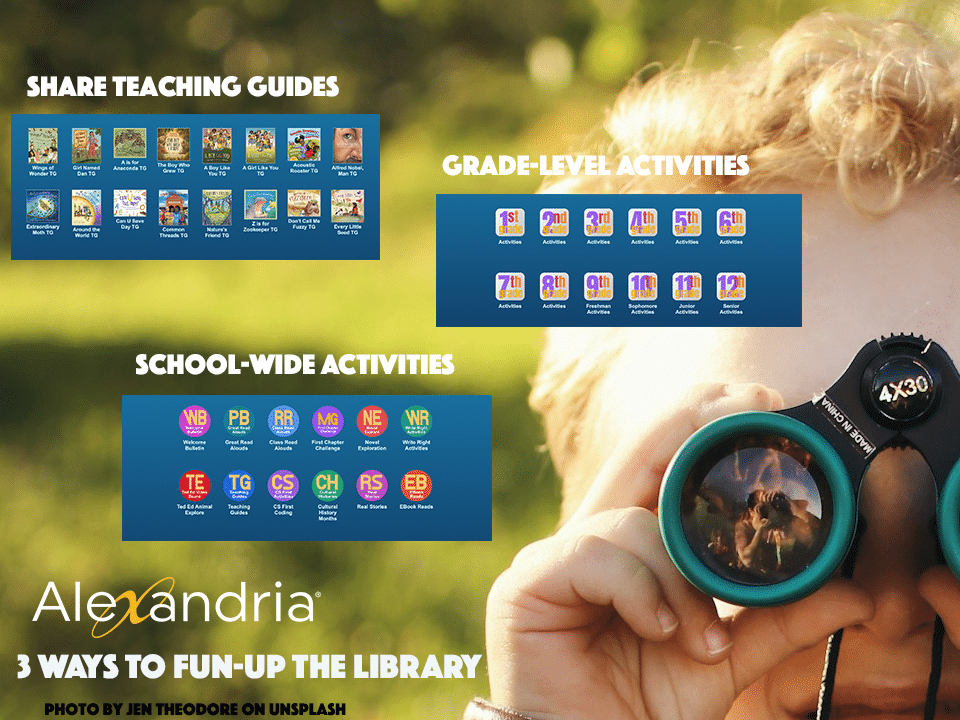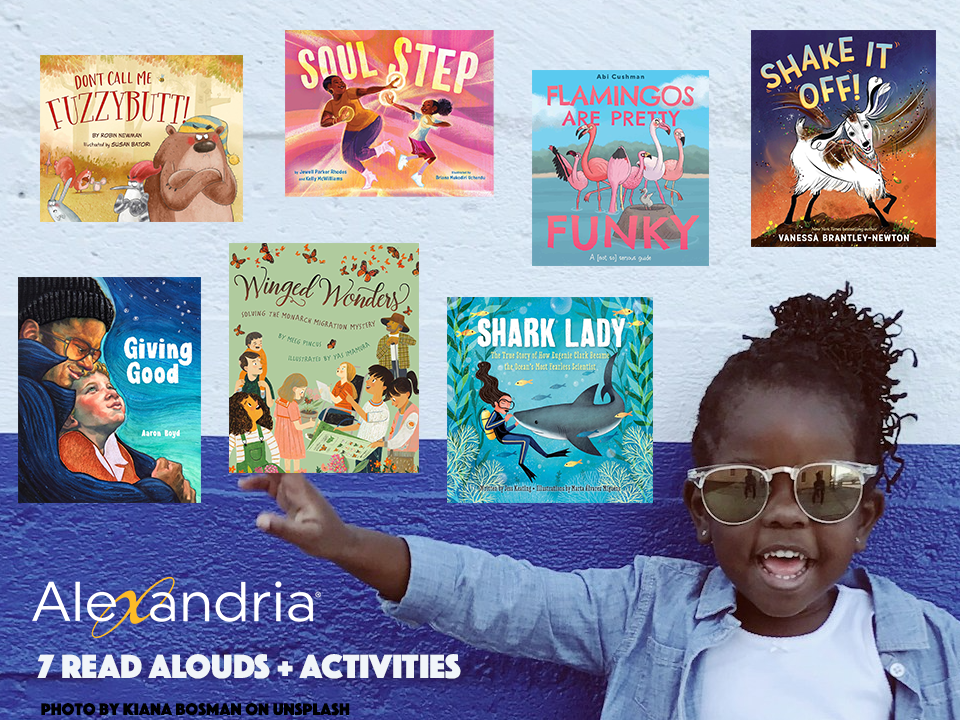March Women’s Month Posters
February 21, 2020
Librarian End-of-School-Year Checklist
March 20, 2020Library Activities for Reading Comprehension

Reading is incredibly important! It nourishes the brain by snapping the neurons into action so it can process and break down information. The mind is encouraged to take a pause for ideas and insights when a person is reading a book. For this reason, it is essential for students to become readers. For a student to become a great reader, they should be encouraged to develop their reading comprehension skills.
Reading comprehension refers not to a student’s ability to read, but to understand what they are reading. The purpose of reading comprehension is to gain meaning from the text and make connections. Below are five ways you can help students develop their reading comprehension skills.
Reading comprehension refers not to a student’s ability to read, but to understand what they are reading. The purpose of reading comprehension is to gain meaning from the text and make connections. Below are five ways you can help students develop their reading comprehension skills.
1| Challenge students to ask questions if they don’t understand or are confused when reading. Asking questions about the story will engage students to understand the meaning of what they are reading.
2| Help students make connections between what they’ve read and their real-life experiences. Students may establish links between the story and their personal experience or what they have learned in the past.
3| Ask students to make predictions about what might happen next. Be sure to stop periodically while reading aloud to the class to ask how they think the story will end.
4| Encourage students to draw conclusions from what they have read by asking questions. For example, you can ask “Why do you think the main character in the story was afraid of the water?”
5| Have students retell a story. Once students finish a book, have them draw what they have read. This is a fun and creative way for students to retell a story in their own way.
2| Help students make connections between what they’ve read and their real-life experiences. Students may establish links between the story and their personal experience or what they have learned in the past.
3| Ask students to make predictions about what might happen next. Be sure to stop periodically while reading aloud to the class to ask how they think the story will end.
4| Encourage students to draw conclusions from what they have read by asking questions. For example, you can ask “Why do you think the main character in the story was afraid of the water?”
5| Have students retell a story. Once students finish a book, have them draw what they have read. This is a fun and creative way for students to retell a story in their own way.
Lastly, you can create activities to inspire children to develop their reading skills! Students can build their reading comprehension skills through one easy task: Reading! This March, celebrate National Reading Month with students. We’ve collected fun and engaging reading activities you can implement into your library lesson plans to help students strengthen their reading comprehension skills.
Reading Comprehension Activities for Students
Retelling Glove
Retelling a story helps young readers to understand what they’ve just read. Common core standards for reading literature require that students are able to identify characters, setting, and significant events in a story. The Retelling Glove is the perfect activity to work on students’ recall and engagement in stories. Here are the following things to include on your Retelling Glove:Who: Who are the characters mentioned in the story?
What: What was the problem in the story? What happened?
When: What time of day? What time frame in history?
Where: Where the story is taking place?
How: How did the characters solve the problem?
Why: Why did the author write this story?
Ebook Stations
Students become better readers by strategically using ebooks features like animations, sound effects, and imagery to identify unfamiliar vocabulary words, understand context, and develop reading connections. Not only do ebooks increase student literacy, but they also help students become savvy digital media users and information gatherers—critical 21st-century skills.If you have a digital library, you can create ebook library stations for students to rotate through. Here are the best interactive ebooks to help students develop their reading skills:
Pre-Reading Predictions
Before reading a text or book, give students the title of what you’ll be reading. You can also provide pictures that reflect the topic of the text. Let students make 2–3 predictions about the subject based upon the title and images. Have them include reasons as to why they made the prediction.After the text is read, have students go back to see how accurate their predictions were. This can be an individual task or a group activity.
Pre-reading activities are a great supplement to specific units taught in classrooms. For example, as a social studies teacher moving into Black History studies, you can take a non-fiction book like Rosa Parks: Courageous Citizen and ask students to make predictions about what they think they know about the text. The same can be done for a fiction title like Roll of Thunder Hear My Cry. This will help students become introduced to the unit topic for their class while applying reading comprehension skills as they read the book.
Fairy Tale Dice
Reading comprehension goes hand-in-hand with storytelling. Have students exercise their imagination and build up their reading and writing skills with our Fairy Tale Dice.Have students pair up. Each student will roll the dice and write a short story based on the dice they roll. After the students have written their story, they'll share it with their partner. For younger students, you can have them gather in groups and tell their story to the group.
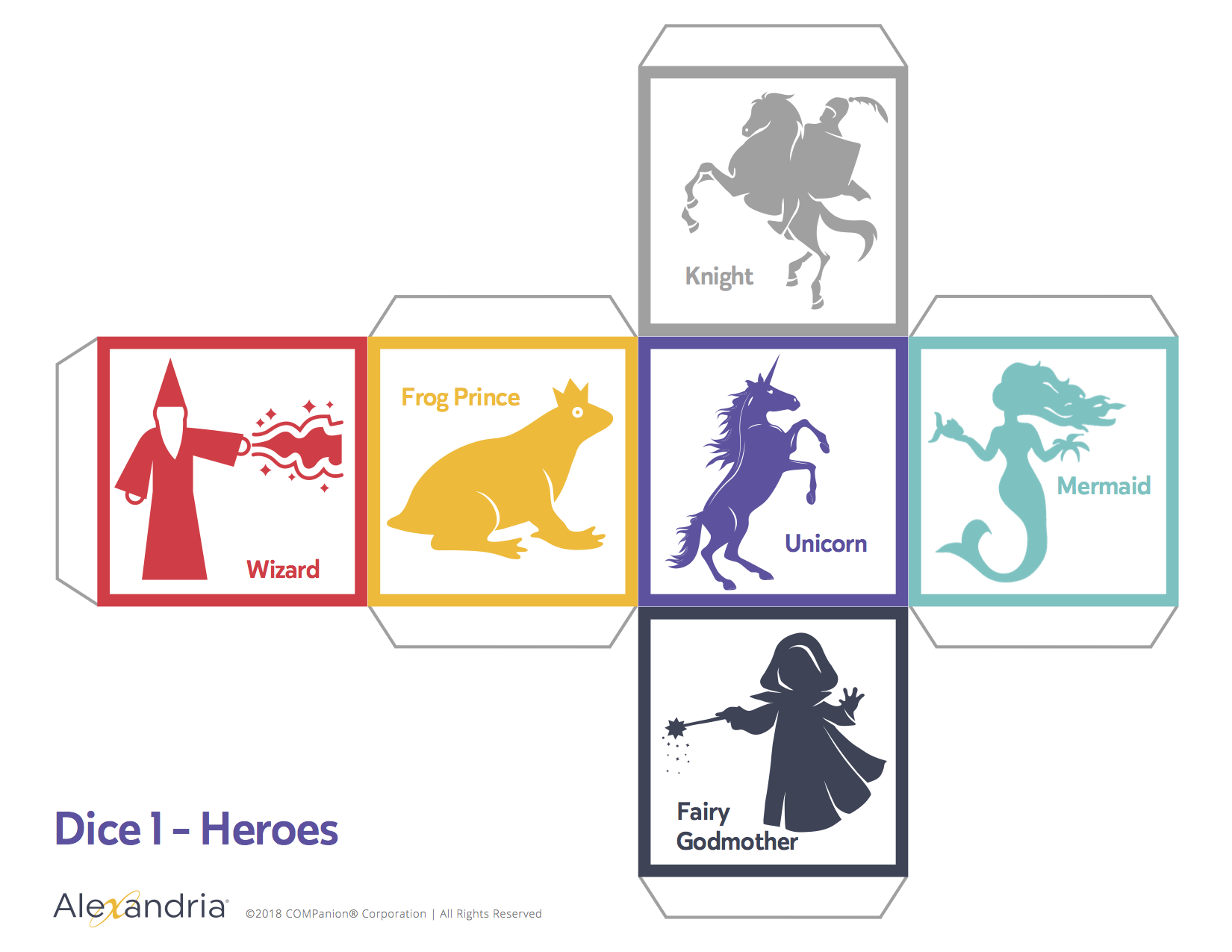
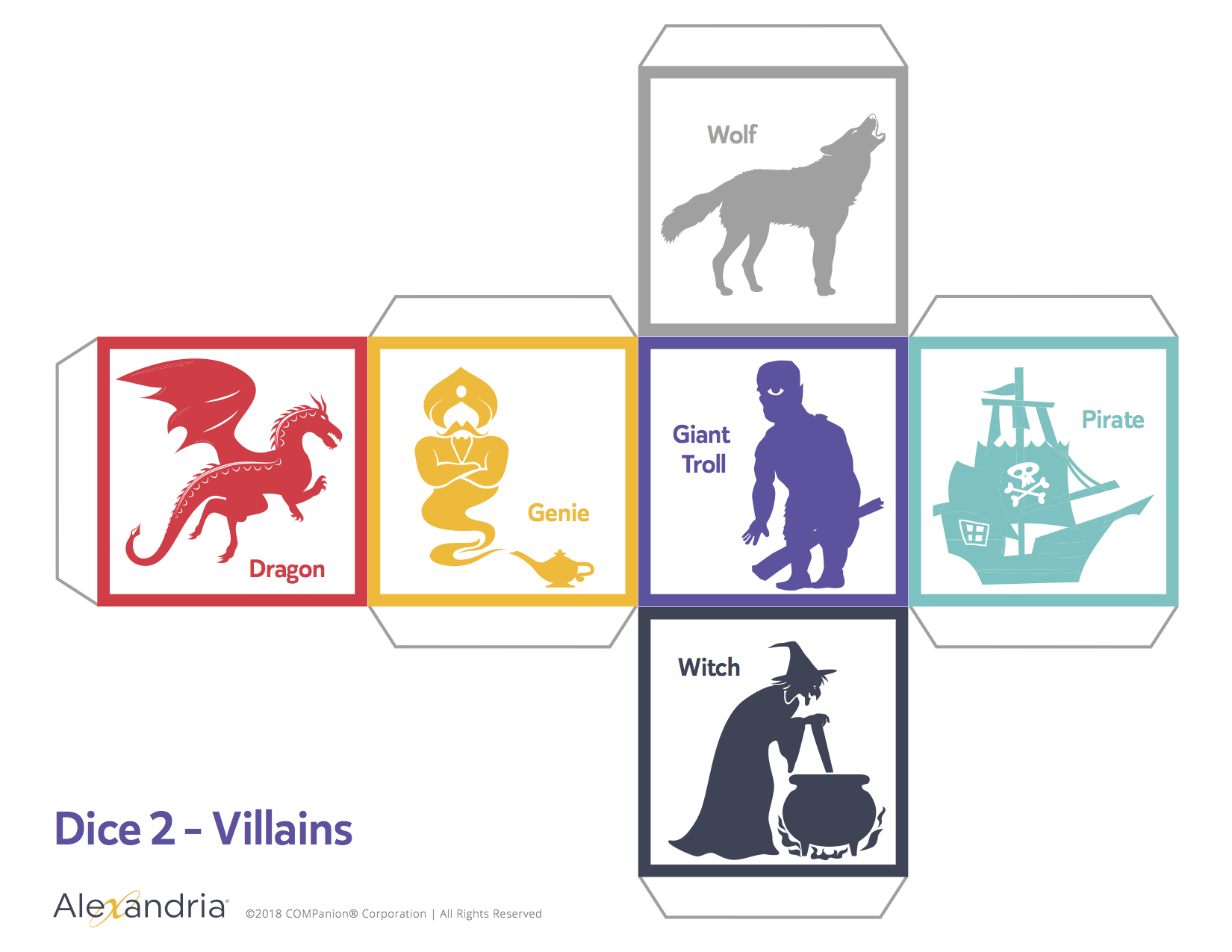
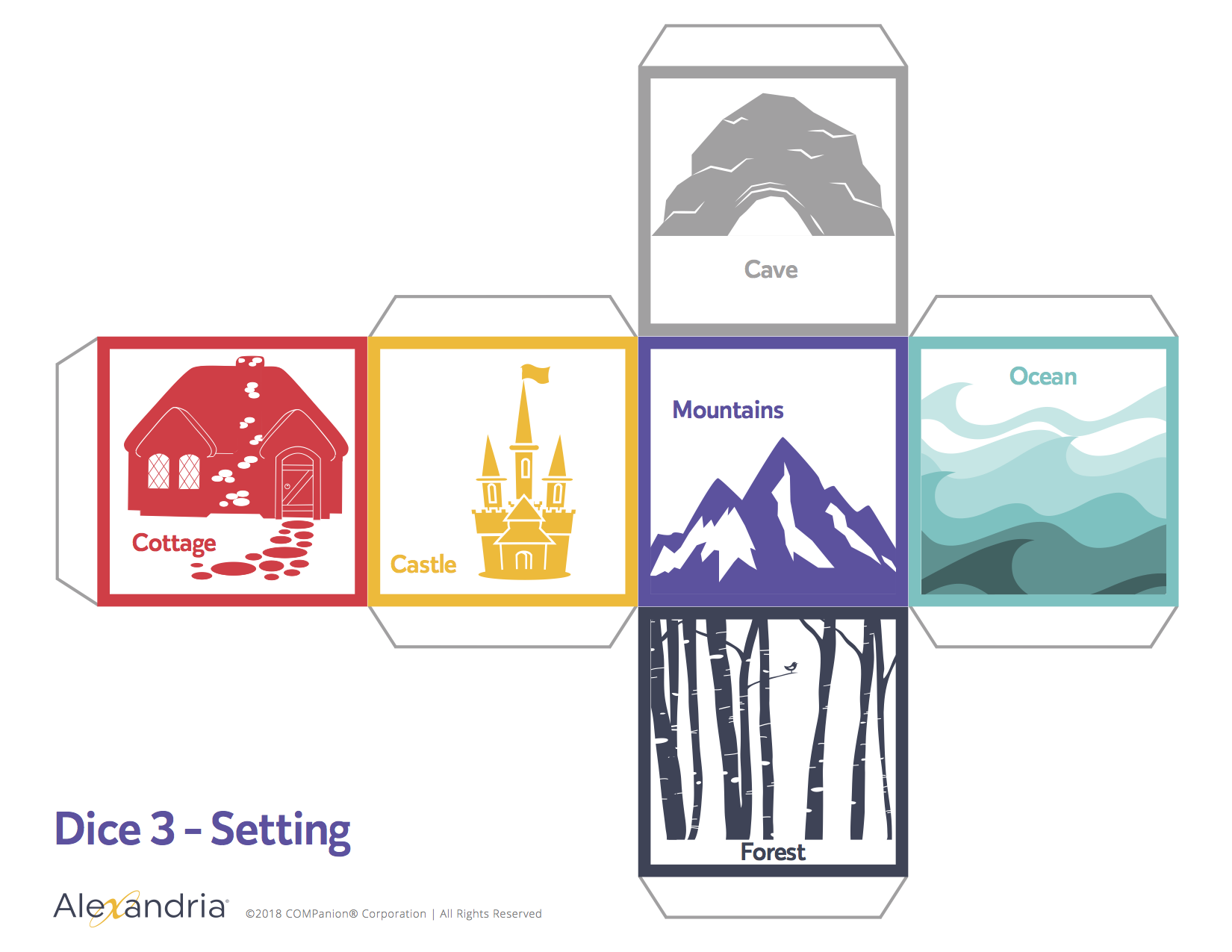
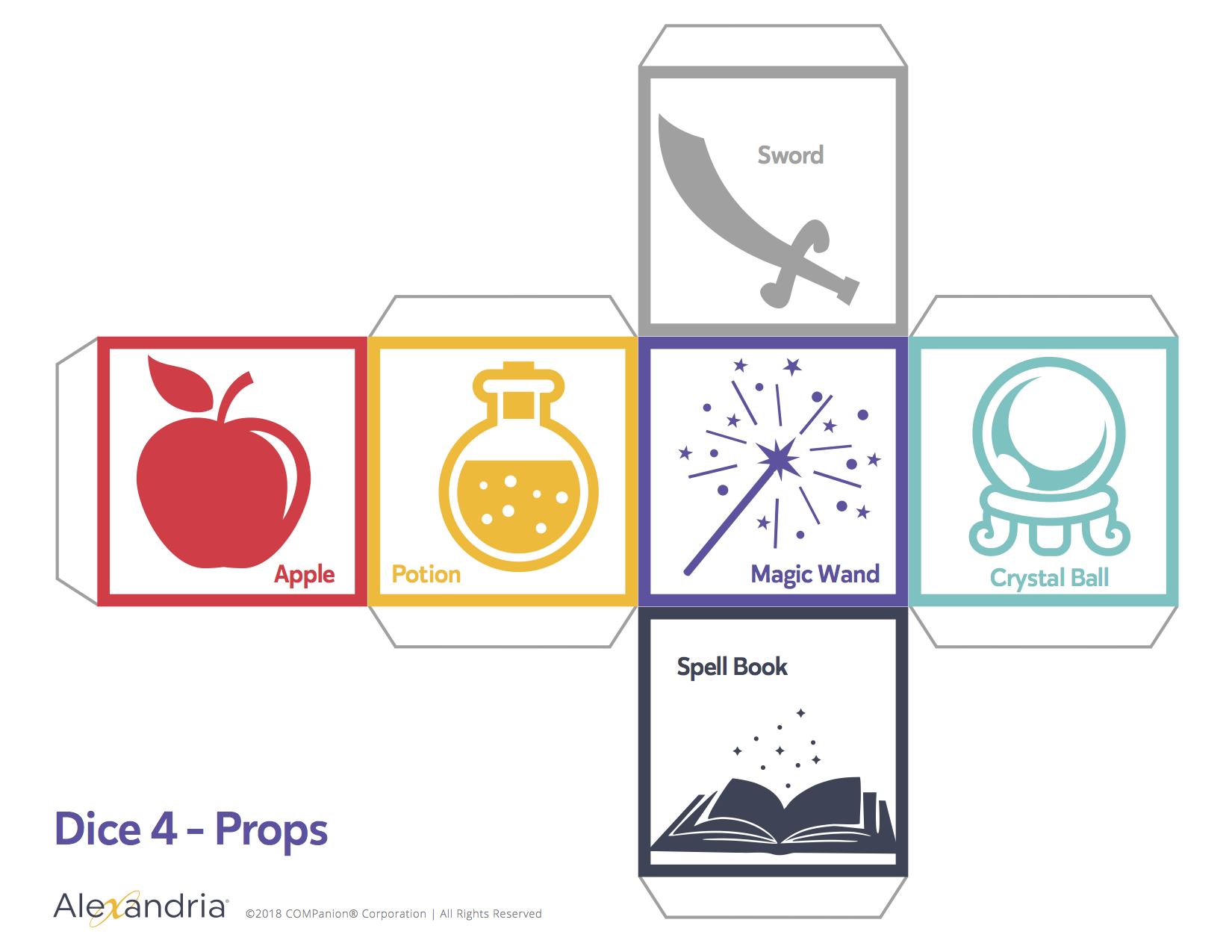
Alexandria’s Ebook Integration
Digital libraries support student learning by making it more accessible for students to use tools to build their reading comprehension. We partner with industry-leading vendors like OverDrive, MackinVIA, Axis360, and Perma-eHub so you can make it easier for students to check out the ebooks in your library.Find out how you can utilize Alexandria’s ebook integration at your school library.




